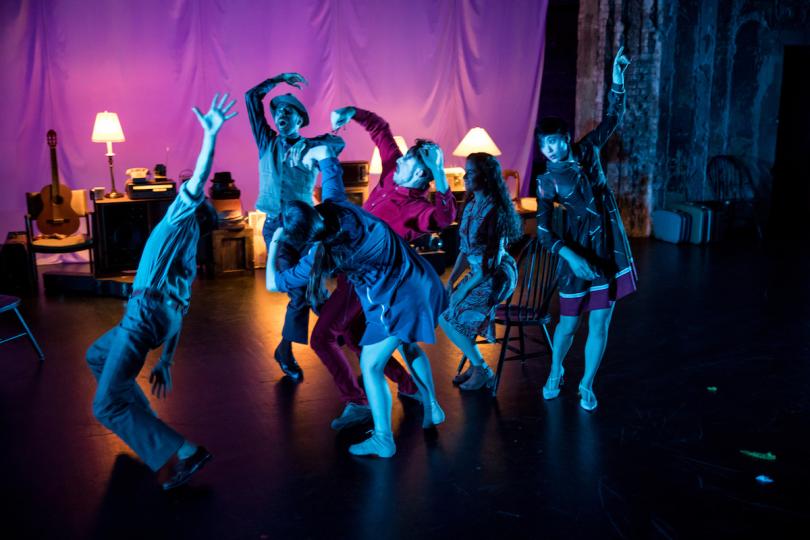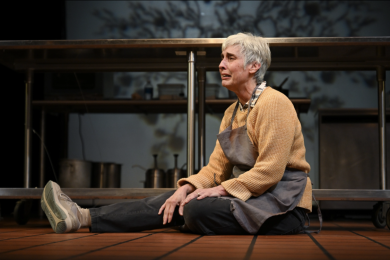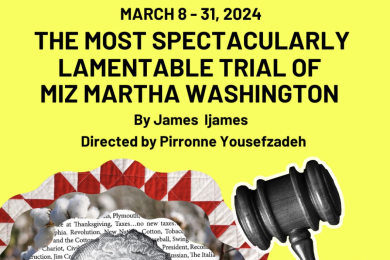There are no skeletons in these closets, only stories

This past week and this coming weekend, the Southern Theater plays host to the sometimes wild, sometimes sober, but always intriguing The Room with Closets. Based on the book by A. Pablo Iannone, and crafted for the stage by Iannone’s daughter Alejandra Iannone with a company of players, The Room with Closets is a moving testimony to the power of family lore and the richness that can come from iterative art practices.
DRAFTS AND ENDINGS
In graduate school, one of my favorite professors had a saying that has burrowed its way into my soul. When trying to write a first draft, he would tell you the most important thing was to “get to the end.” Your argument only becomes clear once you have struggled through your tangled ideas and tried to set them up in a linear fashion. You can't draft a conclusion until you can look back at what you have already said. You can't truly understand what you meant until you get to the end. I applaud Alejandra Iannone and Rick Ausland (the creative forces behind Sparkle Theatricals) and the ensemble for getting through to the end of The Room with Closets, which feels like a first draft in the best possible way. It is messy and hard to understand at times. Some larger gambles fell flat and others were spectacular. In the manner of devised theatre, there are moments where there were probably too many cooks. It could use an editor. But, in the spirit of drafts and getting to the end, I want to focus on the elements that really spoke to me. They have time to work on truly finalizing the script, the dialogue levels, and creating cleaner transitions. If the path to the ending is clear, there is always time to work on shoring up weaker elements.
It is hard to put The Room with Closets into discrete boxes. It feels neither like a play, nor like a dance, but is instead a hybrid of the two, with elements of magical realism and physical comedy. It is comprised of more than 10 stories (movements? chapters?) which bleed into one another. Each member of the lean ensemble plays many, many characters and animals during the show. In a talkback after the opening night, the cast spoke to the challenges and rewards of working together to create the scenes from different chapters in the book. While some stories are more comprehensible than others, when taken in aggregate, the piece creates a delicious sense of slippage between the real and the imaginary, between the historical and the fictionalized.
STORYTELLING THROUGH MOVEMENT
Perhaps its biggest achievement is the way it manages to foreground movement as a fervent tool for storytelling. Unlike many dance/theatre hybrids, it doesn’t give primacy to either form, instead insisting they remain fused together. Even during dialogue-heavy moments, there is a choreographic sensibility to the blocking and movement. In one vignette, a town is flooded and coffins become unmoored from the earth to rock gently against a home; when the storytellers start this simple but unsettling movement, it remains deeply physical instead of horrifying--sad and lonesome instead of scary. In another story, the ensemble enacts carcasses at a meat packing plant; they hang and sway by one arm as if in an invisible breeze. It is a testament to the movement that in each of these scenes the viewer can feel what the storytellers are embodying even before being told.
Another triumph of movement in this work is the many times the ensemble comes together to create different mechanical inventions. A flying machine, a car, even a rudimentary door recieve lavish attention from the storytellers. A few of these scenes are played too long, but you can forgive the storytellers for getting caught up in their own verve.
THE INTANGIBLE
Another reason this piece sticks with you is that it does not shy away from the more complicated and esoteric stories. While some pieces are easier to understand (a boy builds a flying machine, a woman gets married and realizes it was a mistake), others attempt philosopher’s problems.
Perhaps the most interesting one is a variation on Schrödinger's cat. In the story, every time a scientist attempts to test his theory (the cat is both alive and dead, simultaneously), reality as we understand it splits, creating both a live and a dead cat. Soon afterwards, the scientist realizes that this same process could apply to himself, and a haunting scene ensues where he tries to kill himself only to become his double. It reminds me of The Prestige, but instead of relying on the sickening spectacle of rows and rows of copies drowned in water, two storytellers defty convey the same repetitive madness using only their bodies.
There are other visual nods and call backs that weave their way throughout the story, keeping the loose connections between the stories clear. In particular, a motif of passports becoming birds reminds the audience that this is a story that has immigration as a central (if understated) theme.
The Room with Closets does not feel polished to me, but don’t let that dissuade you. In fact, that indeterminacy is part of its charm. The storytellers have clearly gone all-in to give life and movement to these tales, and I can think of no better compliment than this: I would recommend seeing it now, and I personally would absolutely go and see a restaging of this piece in one to five years. It only has one week left at the Southern, so if you have a chance, I would recommend checking it out!




